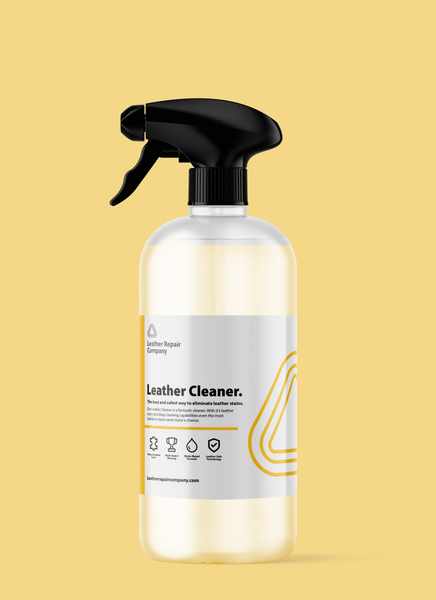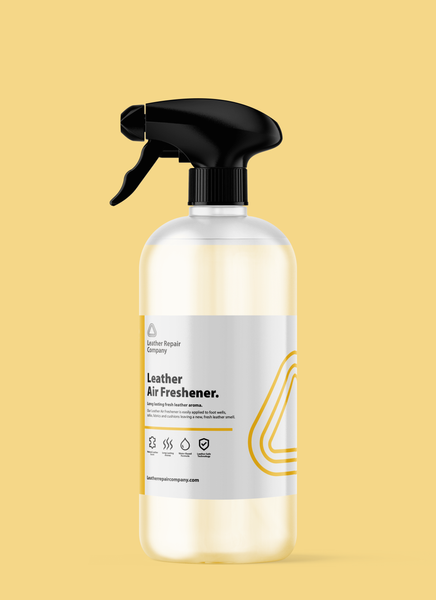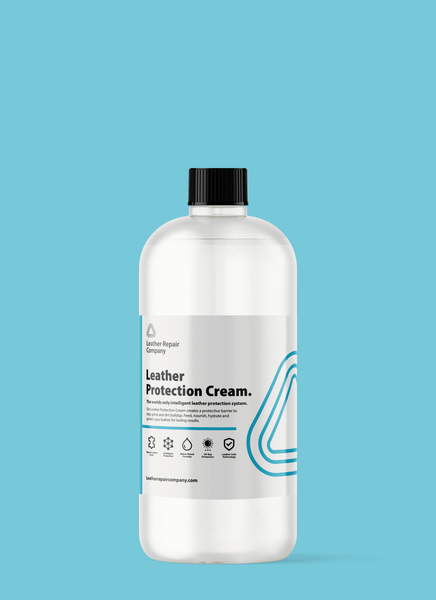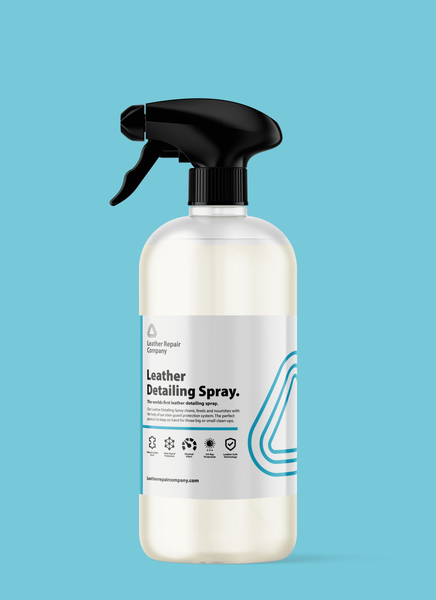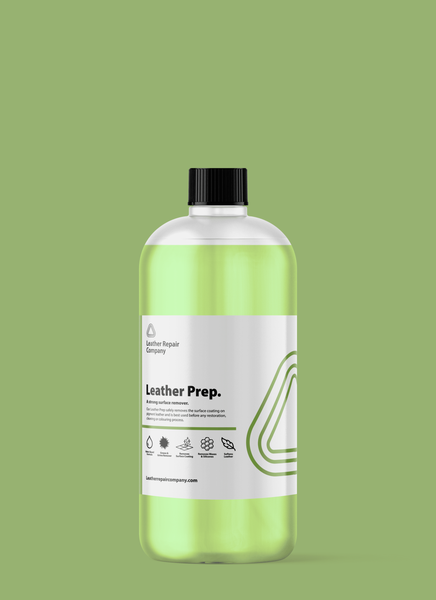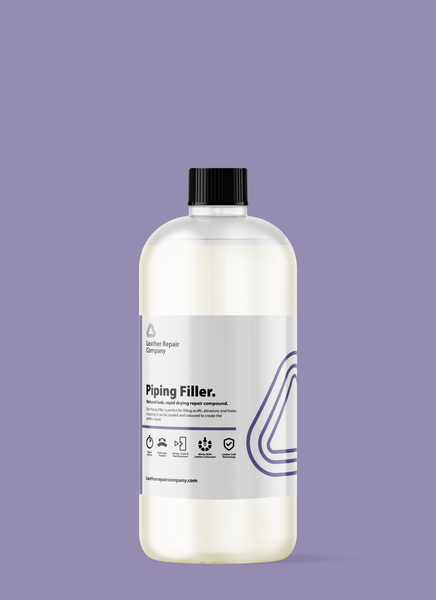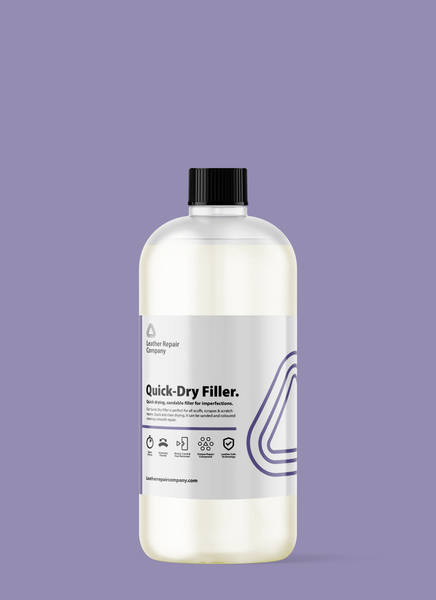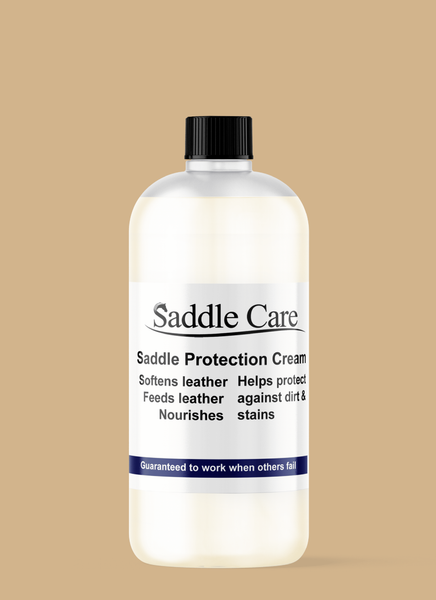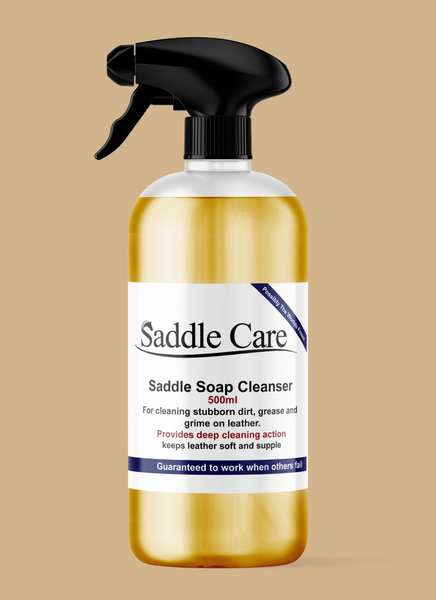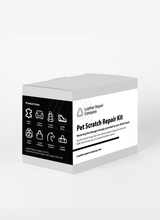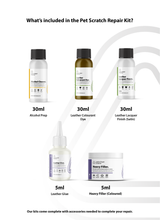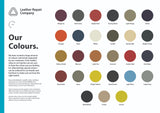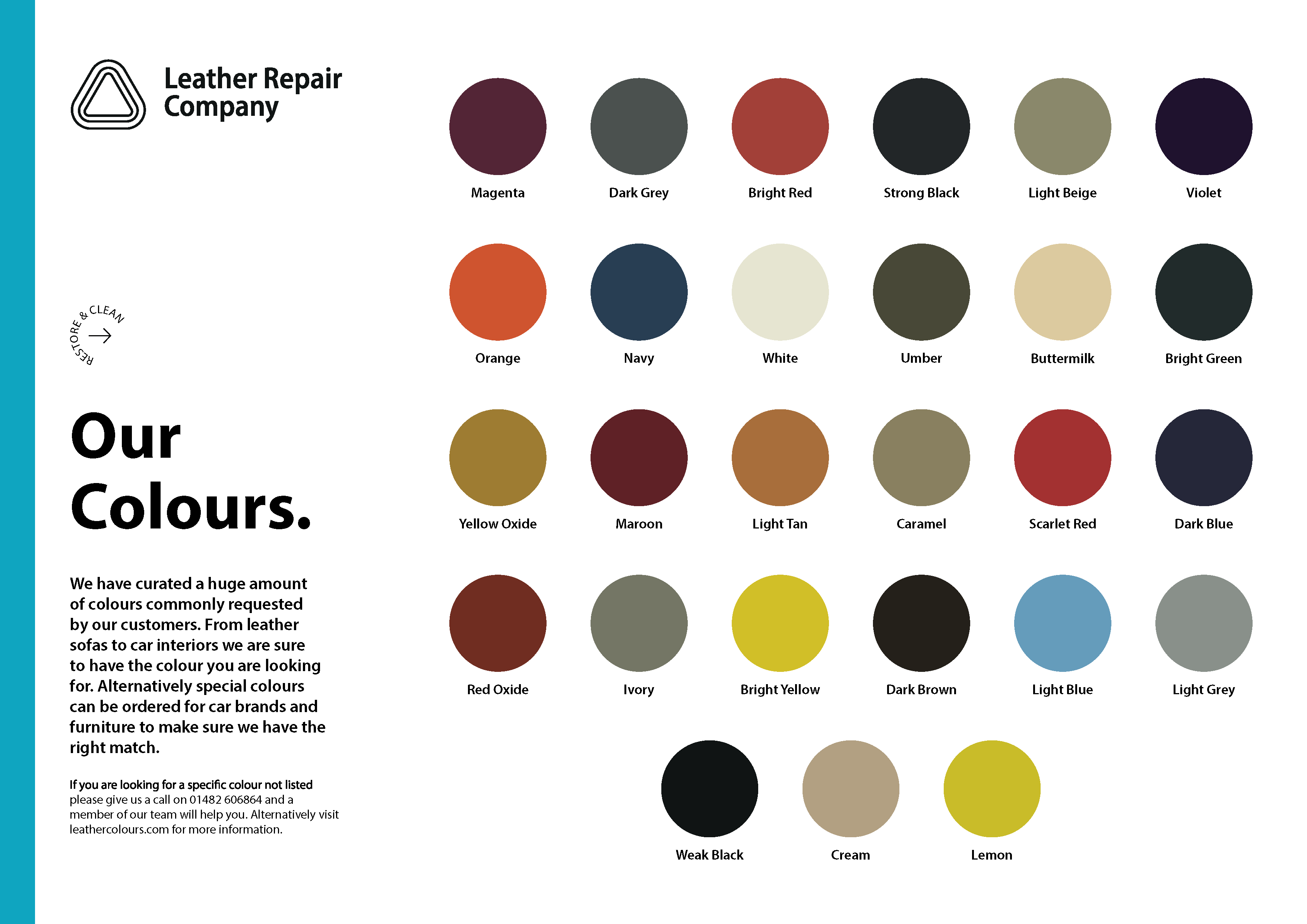What's Included
• 30ml Leather Colourant Dye
• 30ml Satin Leather Lacquer Finish
• 30ml Alcohol Prep
• 5ml Leather Glue
• 5ml Heavy Filler Kit
3 x 5ml Tints
Backing Fabric
2 x Sponges
1 x Cloth
1 x Mixing Pot
Instructions
Instructions
1. Prepare The Area
Preparation is key with any job you are carrying out.
You need to prep the area first with the alcohol cleaner and the cleaning cloth to remove some of the surface colour, once this is complete you are ready to tackle the cat scratches.
2. Dealing With Loose fibres: Pet Scratches
All loose fibres can be repaired NEVER trim these off, the internet has a great deal of wrong information, NEVER trim them off. When carrying out repairs to any type of cat scratch, you don’t want to create further problems, you want to simply fix the problem you have. Cutting off the fibres will create holes that have to have filler applied to them.
The next stage is to use a spatula, and drag this over the surface of the leather slowly against the pucks and scratches lifting them up into the air, once you have pulled them all up so they are standing proud, next using your leather glue gently apply glue to the full surface wiping it into the pucks in the same direction you just made them all stand up, once you have applied enough glue, you can then start the next process.
Using the spatula again, this time going in the opposite direction, pushing all fibres back down into the original position they came from, this is not only a much better and stronger repair, it’s also much easier to repair cat scratches this way than by cutting off loose ends and creating holes.
3. Sanding Down The Area
Once the leather glue has cured which should not take too long about 20 minutes, you can then proceed to sand down the area with either 320 grit paper or 1200 grit sandpaper.
You don’t need to sand a great deal just enough to make the rough feeling surface feel a little smoother, as you will be applying Heavy Filler next and then sanding that down once cured fully to make the repair perfect.
4. Heavy Filler Application
Now that you have carried out the sanding process above you are ready for the heavy filler application.
You can use the standard made white Heavy Filler if you wish or you can use a Coloured Heavy Filler, using a spatula gently wipe this into the surface making sure it’s getting deep down in to any small areas / cracks that appear in the leather around the pucks that the cats have made when they scratched the leather originally.
After applying the filler, it should be sanded down, this time using 320 or 1200 grit sandpaper to smooth out any rough areas / edges.
5. Getting Ready To Apply Colour:
This is the stage where the repair comes alive and those nasty cat scratches are gone.
First, check the area for dust and remove any particles of dust you can see to ensure a smooth finish.
The first coat of colour you apply has to be wiped on in a circular motion making sure this soaks back into the leather giving you great adhesion.
The next stage is to sponge on a good even coating of colour to the surface, this provides for a better repair, in the long run. The beauty of the products from the Leather Repair Company is that they are designed to be used by the DIY person in mind but yet providing the finest professional results in the industry.
You can speed up the drying process by using a hairdryer to dry the painted surface, this will allow you to apply a second coating much quicker.
Before going to the next step, check the colour to make sure it’s fully covered, if you wish to apply a third coating you can do. Make sure that you sand the colour with 1200 grit paper between each coating.
If you are happy with the colour at this stage, give this a very light sanding with 1200 grit sandpaper.
6. Putting On The Sealers
The sealers lock in the colour and give it even better protection than before, the leather colours are self-sealing, but the clear coat sealers will provide even better protection.
Lightly and evenly apply one coat at a time, with clear coat sealers it’s best to apply two coats, three maximum. If you do apply three coatings, then before applying the third coat very gently sand over the clear coat sealer with 1200 grit paper to remove any dust or small bits of debris on the surface, if you are just putting on the two coats then do this after the first coat.
Each coating you apply can be dried with a hairdryer to speed up the process.
It’s not just cats that scratch leather, people have all types of pets in and around the home, Dogs, Rabbits, Birds, Rats, Hamsters, Monkeys, Ferrets, Guinea Pigs, Reptiles like Lizards all these animals have large claws and walk around the home and over your furniture.
If these pets claws are not kept trimmed they can cause all sorts of damage, even with trimmed claws damage can still happen as pets clamber around the furniture while your back is turned.
See our leather guides for further help. Click Here
